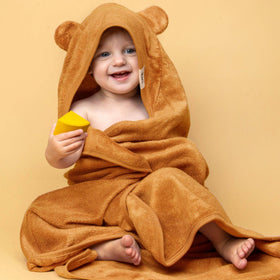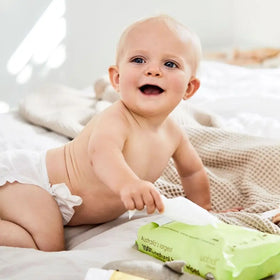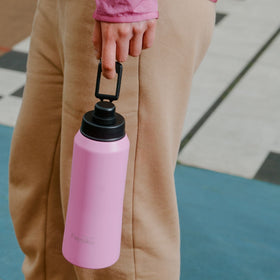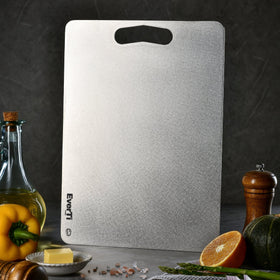
What are SAPs, and are they safe in disposable nappies?
What are SAPs?
Disposable nappies and super absorbers (SAPs) are super absorbent polymers. SAPs absorb and hold a huge amount of liquid, relative to their size. SAPs can hold between 50 and 500 times their own weight, depending on the liquid they’re absorbing. In contrast, cotton and fluff pulp hold only 20 times their own weight. What this means is that a disposable nappy containing SAPS are able to be thinner, and use less raw materials than a nappy without SAPs. Without SAPs, disposable nappies would have to be much bulkier, meaning more landfill. Nappies that don’t use SAP don’t have the same ability to keep babies dry, so either babies are left with wet bottoms (which can cause nappy rash) or you have to use a lot more nappies, which isn’t great for the environment, or for your wallet.

Are SAPs safe?
A quick google search on SAPs will leave you wondering about the safety of SAPs. There are plenty of claims about the toxicity of SAPs, including:
1. SAPs are not safe if your baby ingests them
SAPs are actually an FDA approved food additive. It’s considered non toxic by the EPA (US Environmental Protection Agency), Consumer Product Safety Commission, and OSHA. Based on various material safety data sheet on SAPs – it’s considered non toxic. This doesn’t mean that we encourage you to allow your baby to chow down on them, by the way!
2. SAPs cause toxic shock syndrome
SAPs were removed from tampons in the 1980s, when the FDA thought that they were the cause of TSS. However, it turned out that SAPs weren’t the problem. Further researched showed that the actual cause of toxic shock syndrome was a build up of bacteria that occurs when tampons are not changed as frequently as necessary.
3. SAPs cause asthma
A study on “Acute respiratory effects of diaper emissions” was widely reported to prove that mice exposed to disposable nappies suffered from respiratory problems. In actual fact, the co-author of this report, Mr Anderson, said that he was misquoted and that the respiratory problems in mice were actually due to the perfumes added to most disposable nappies. He further commented that he knew of no problems with SAPs.
4. SAPs cause irritations
Again, this is not correct. It’s the dyes and perfumes in nappies that cause the allergic reactions, not the SAPs. Dyes used in some disposable nappies cause allergic reactions, and also that dioxins used in nappies cause allergies.
Bambo Nature nappies do not contain any of these allergenic ingredients. See ingredients list for Bambo Nature here. See the list of research at the end of this article for studies showing that SAPs are non-irritants.
5. SAPs can kill you if you inject them.
Yes, and so can an air bubble. The issue of children’s safety leads to emotional reactions, but it’s worth applying a little bit of common sense, too. In short, there are a lot of rumours, but nothing that actually substantiates this scare-mongering. On the contrary, there have been a number of studies by reputable bodies (including government led consortiums), concluding that SAPs are safe:
Danish EPA (Environmental Protection Agency) found that “No serious adverse effects were observed by oral, dermal or pulmonal administration”, meaning that it’s safe when it comes into contact with the skin. They also found that SAPs are not toxic to aquatic organisms.
The CCRIS (Chemical Carcinogenesis Research Information System) found that SAPs arenot mutagenic in bacterial tests (Ames) and in Eukaryotic tests (tests with mammalian cells).
BIBRA Information Services Ltd (a UK organization) had their team of toxicologists review SAPs and they found that oral administration of sodium polyacrylate to pregnant rats did not produce foetotoxicity or teratogenicity (birth defects).
MBDC (global sustainability consulting and product certification firm based in the US) – certified SAPs as green.
Bambo Nature nappies are certified by a number of independent testing laboratories to ensure that they do not include any irritants, including:- Danish Asthma Allergy Association
- Nordic Swan Eco Label
- proDERM dermatological institute
- British Retailer Consortium
What about the SAPs in Bambo Nature?
Bambo Nature nappies contain a small amount of two kinds of SAPs, one of which is a starch based bio-superabsorbent which is 100% biodegradable. The second is a high quality, permeable superabsorbent made of acrylic polymer. The manufacturer, Abena, is currently working with suppliers to use only a starch based bio-superabsorbent, while still maintaining their excellent quality standards.
Further reading:
Safety of Disposable Diaper Materials: Extensive Evaluations Validate Use
Safety Evaluation of Disposable Baby Diapers Using Principles of Quantitative Risk Assessment










